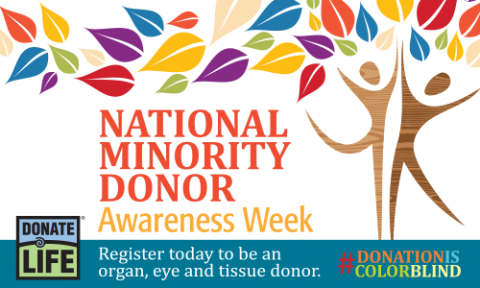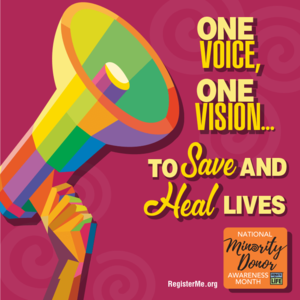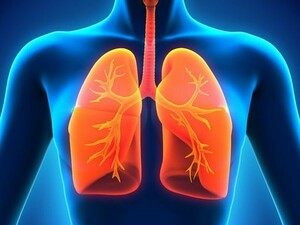- Adult Heart DiseaseDiseases of the arteries, valves, and aorta, as well as cardiac rhythm disturbances
- Pediatric and Congenital Heart DiseaseHeart abnormalities that are present at birth in children, as well as in adults
- Lung, Esophageal, and Other Chest DiseasesDiseases of the lung, esophagus, and chest wall
- ProceduresCommon surgical procedures of the heart, lungs, and esophagus
- Before, During, and After SurgeryHow to prepare for and recover from your surgery

People of all ages, races, and ethnicities can save and enhance lives by donating their organs, eyes, and tissues. Organ and tissue transplants are needed by people everywhere in the US. Every year, more than 30,000 transplants bring new life to patients and their families, according to Donate Life America.
National Minority Donor Awareness Month (August) and National Minority Donor Awareness Week (August 1-7) are designed to increase awareness of the need for more organ, eye, and tissue donors, especially within multicultural communities. This special observance honors minorities who have been donors, and encourages others to register as donors while also taking better care of their health in an effort to reduce the number of people who need transplants.
Each day, about 80 people receive organ transplants. However, 22 people die every day waiting for transplants that can’t take place because of the shortage of donated organs, reports the US Department of Health and Human Services (HHS). Every 10 minutes, another person is added to the national transplant waiting list.
According to HHS, people of most races and ethnicities in the US donate in proportion to their representation in the population. The need for transplants in some groups, though, is disproportionately high, sometimes due to a high incidence of certain conditions.
Although organs are not matched according to race/ethnicity, and people of different races frequently match one another, all individuals waiting for an organ transplant will have a better chance of receiving one if there are large numbers of donors from their racial/ethnic background. This is because compatible blood types and tissue markers—critical qualities for donor/recipient matching—are more likely to be found among members of the same ethnicity. A greater diversity of donors may potentially increase access to transplantation for everyone.
Anyone, regardless of age or medical history (with few exceptions), can sign up to be a donor. Currently, there are more than 156 million people over the age of 18 in the US who are registered as organ donors. For information about becoming one, visit your state’s donor registry.


August 1 is World Lung Cancer Day. This day helps raise awareness about lung cancer and its global impact, creating an educational movement of understanding lung cancer risks as well as early treatment around the world.
Lung cancer is the leading cause of cancer death for both men and women in the US. Each year, more people die of lung cancer than of colon, breast, and prostate cancers combined.
The American Cancer Society (ACS) estimates that more than 235,000 Americans will be diagnosed with lung cancer this year and approximately 132,000 lung cancer patients will die.
But there is new hope, according to the International Association for the Study of Lung Cancer (IASLC). The research, diagnosis, and treatment breakthroughs in the last 10 years offer patients and their families a better outlook. Lung cancer screening programs offer new promise for early detection and improving survival rates. As many as 12,000 to 15,000 lives can be saved each year through these screening programs. For more information about lung cancer screening, read Dr. Doug Wood’s blog article.
Symptoms
According to the American Lung Association, many people with lung cancer don’t have symptoms until the disease is in its later stages. Symptoms are different in each person, and may include:
- A cough that doesn’t go away and gets worse over time
- A chronic cough or “smoker’s cough”
- Hoarseness
- Constant chest pain
- Shortness of breath or wheezing
- Frequent lung infections such as bronchitis or pneumonia
- Coughing up blood
Some symptoms of lung cancer may not seem related to the lungs or breathing, but may still be a sign of lung cancer. These symptoms include:
- Weight loss
- Loss of appetite
- Headaches
- Bone pain or fractures
- Blood clots
See your doctor right away if you notice any of these symptoms.
Protection and Prevention
Breathing about 25,000 times and inhaling approximately 2,400 gallons of air every day, the lungs are the only internal organ in constant contact with the environment outside the body; so it’s especially important to protect your lungs.

• Stop smoking: Cigarette smoking is the number one lung cancer risk factor. Don’t start smoking; quit smoking if you smoke; and avoid secondhand smoke.
• Be mindful of air pollution: Breathing in dangerous chemicals can cause lung cancer. The more chemicals you breathe in, the higher your lung cancer risk.
• Exercise: Daily aerobic exercise and breathing exercises are ways you can “work out” your lungs to their full capacity.
• Get checked regularly: Seek medical help on a regular basis to address any medical concerns or questions you might have.
If you think you are at risk for lung cancer, talk to your doctor about being screened.

